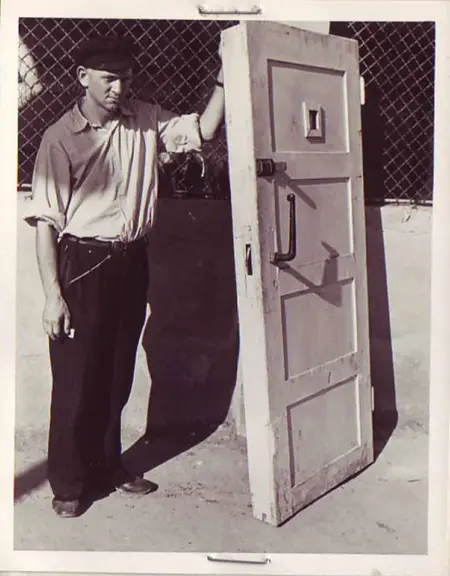Mauthausen: Photographs of Mauthausen-Gusen
Click Left/Right to Scroll
-
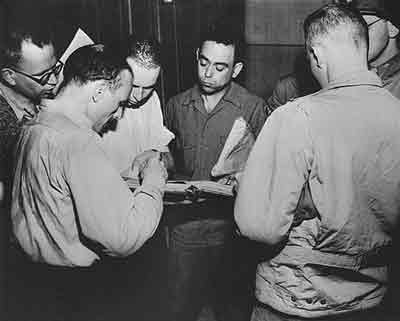 Corporal Jack R. Nowitz (center), a lawyer on the staff of the Judge Advocate General, 3rd U.S. Army, checks books listing exterminations at Gusen.
Corporal Jack R. Nowitz (center), a lawyer on the staff of the Judge Advocate General, 3rd U.S. Army, checks books listing exterminations at Gusen. -
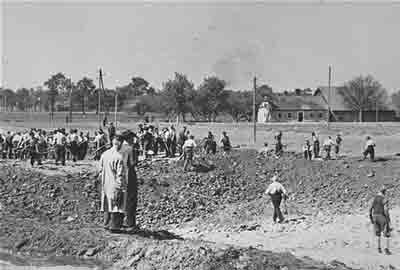 American soldiers force Austrian citizens to dig mass graves for corpses found at Gusen
American soldiers force Austrian citizens to dig mass graves for corpses found at Gusen -
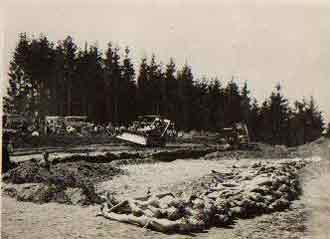 Unburied corpses found at Gusen.
Unburied corpses found at Gusen. -
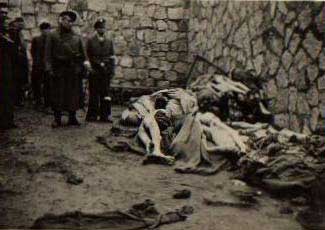 Mauthausen after liberation by the 11th armored and 26th infantry divisions.
Mauthausen after liberation by the 11th armored and 26th infantry divisions. -
 Some of the bodies being removed by civilians for burial at Gusen Concentration Camp, Mauthausen, near Linz, Austria. Men were worked in nearby stone quarries until too weak to continue, then killed.
Some of the bodies being removed by civilians for burial at Gusen Concentration Camp, Mauthausen, near Linz, Austria. Men were worked in nearby stone quarries until too weak to continue, then killed. -
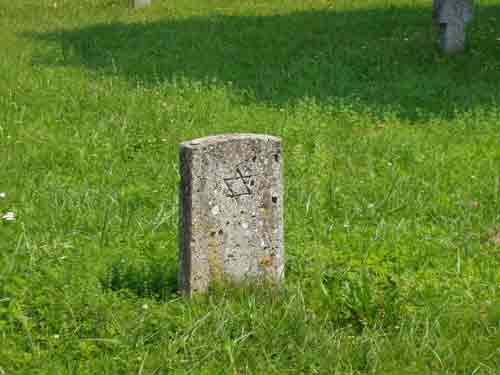 Quarantine area where prisoners were buried at Mauthausen
Quarantine area where prisoners were buried at Mauthausen -
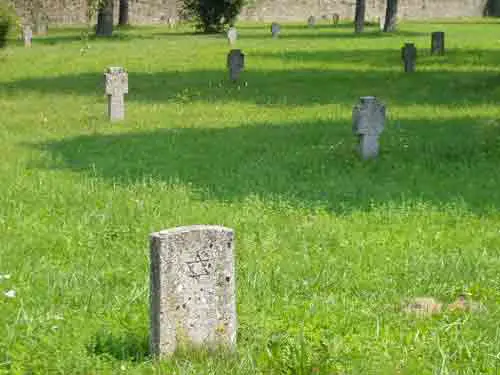 Quarantine area where prisoners were buried at Mauthausen
Quarantine area where prisoners were buried at Mauthausen -
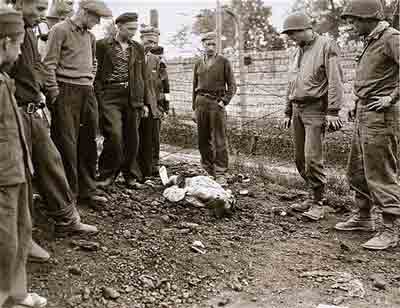 Survivors and U.S. soldiers stand over the corpse of a camp guard killed by survivors at Gusen
Survivors and U.S. soldiers stand over the corpse of a camp guard killed by survivors at Gusen -
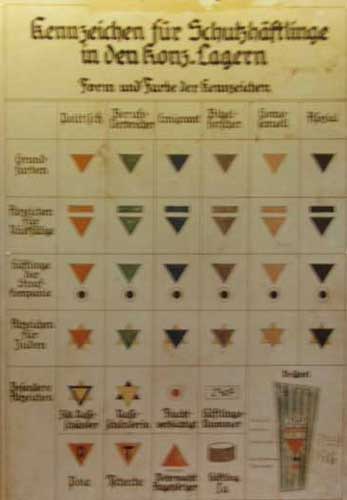 Prisoner badges used at Mauthausen
Prisoner badges used at Mauthausen -
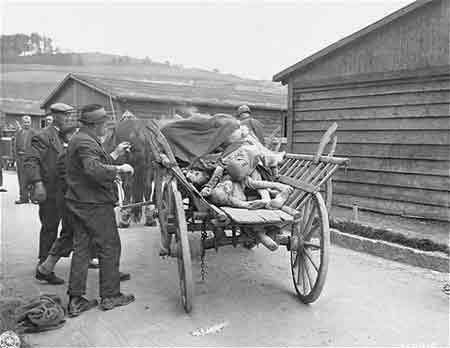 Austrian civilians load corpses onto a cart that will transport the bodies to a mass grave.
Austrian civilians load corpses onto a cart that will transport the bodies to a mass grave. -
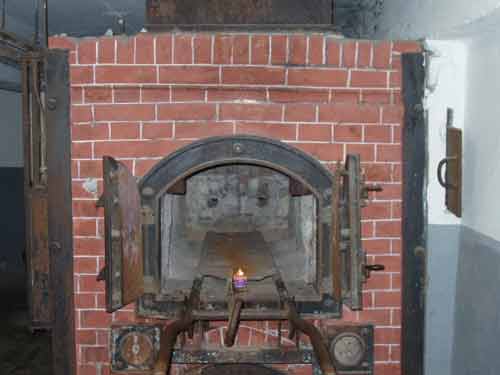 The crematoria at Mauthausen
The crematoria at Mauthausen -
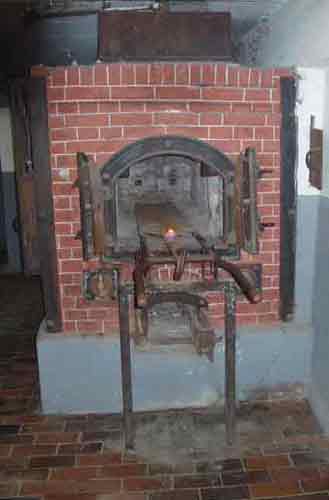 The crematoria at Mauthausen
The crematoria at Mauthausen -
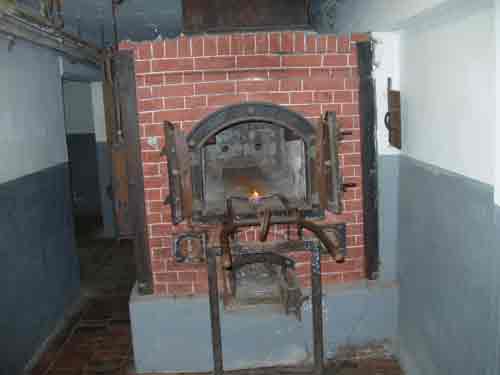 The crematoria at Mauthausen
The crematoria at Mauthausen -
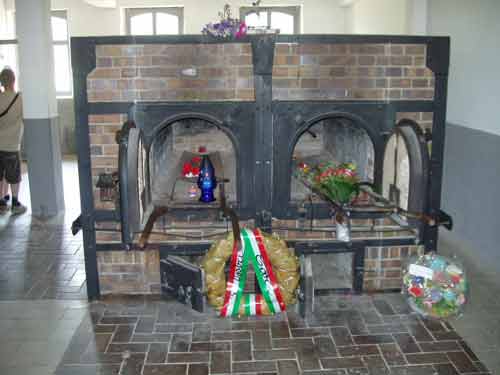 The crematoria at Mauthausen
The crematoria at Mauthausen -
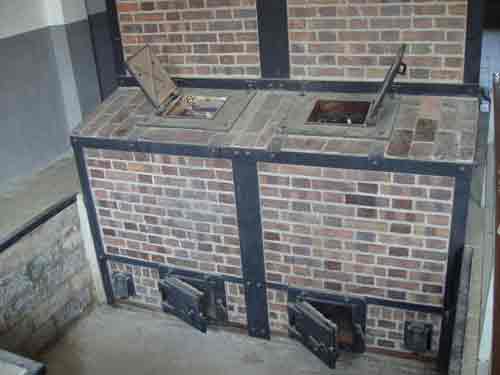 The crematoria at Mauthausen
The crematoria at Mauthausen -
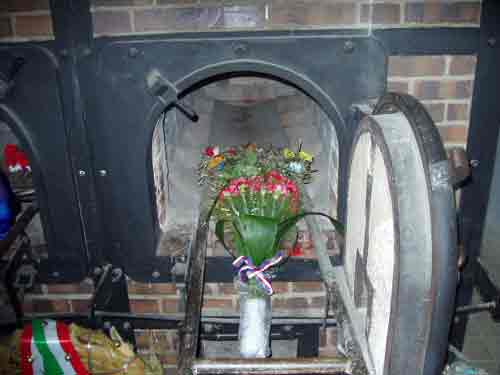 The crematoria at Mauthausen
The crematoria at Mauthausen -
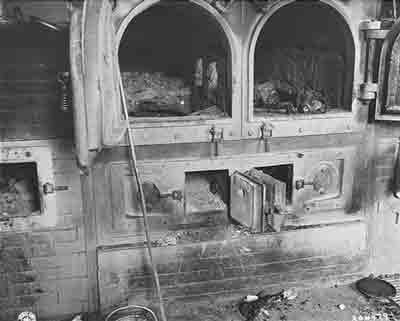 Crematorim furnaces at Gusen after liberation
Crematorim furnaces at Gusen after liberation -
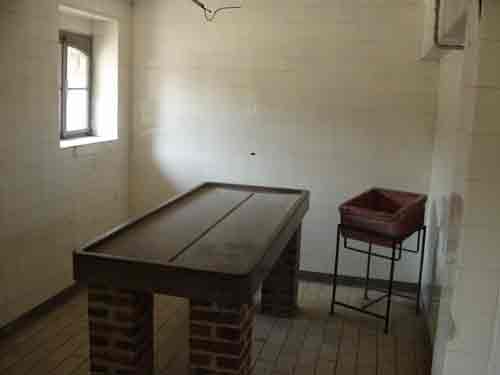 Dissection table at Mauthausen
Dissection table at Mauthausen -
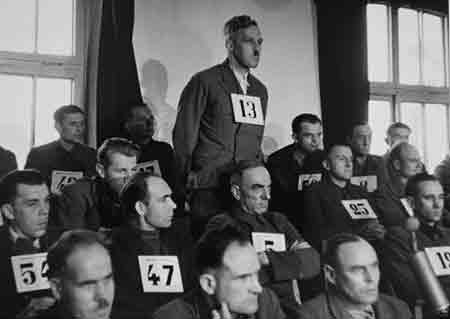 August Eigruber, former Gauleiter of Linz, and a defendant at the trial of 61 former camp personnel and prisoners from Mauthausen. Eigruber was sentenced to death on May 13, 1946.
August Eigruber, former Gauleiter of Linz, and a defendant at the trial of 61 former camp personnel and prisoners from Mauthausen. Eigruber was sentenced to death on May 13, 1946. -
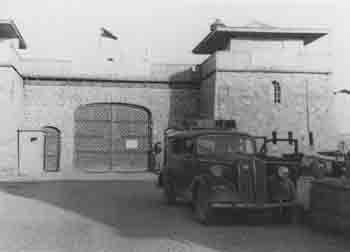 �Entrance to the concentration camp Mauthausen�
�Entrance to the concentration camp Mauthausen� -
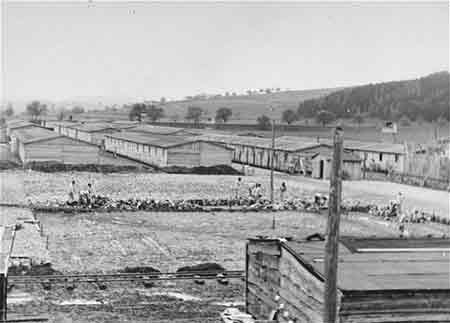 Prisoners at forced labor doing construction work in the Gusen concentration camp.
Prisoners at forced labor doing construction work in the Gusen concentration camp. -
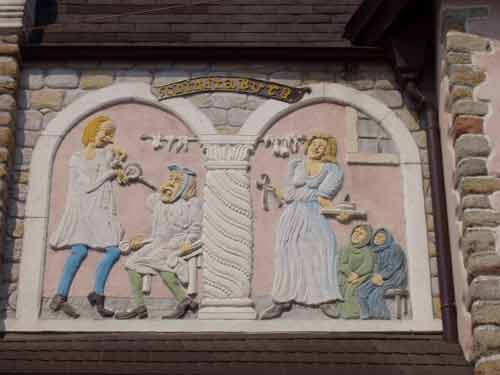 A fresco on the side of a building in the town of Mauthausen
A fresco on the side of a building in the town of Mauthausen -
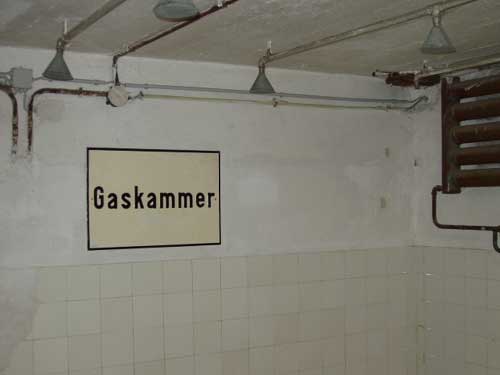 The gas chamber at Mauthausen
The gas chamber at Mauthausen -
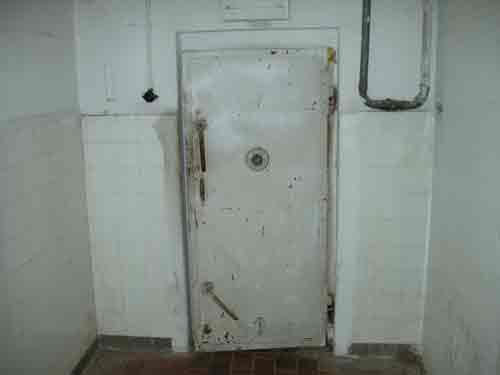 Door to gas chamber at Mauthausen
Door to gas chamber at Mauthausen -
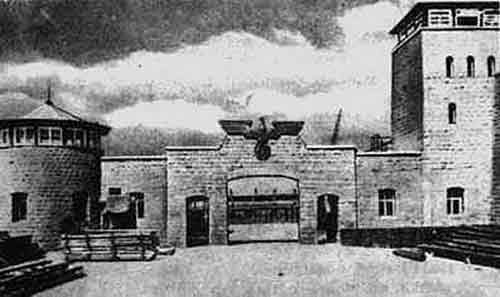 Photo of Nazi eagle over entrance into Mauthausen
Photo of Nazi eagle over entrance into Mauthausen -
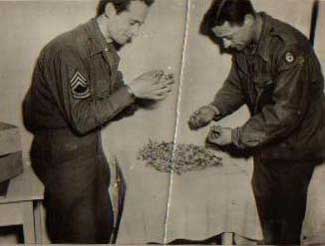 Gold fillings taken from the teeth of prisoners at Mauthausen.
Gold fillings taken from the teeth of prisoners at Mauthausen. -
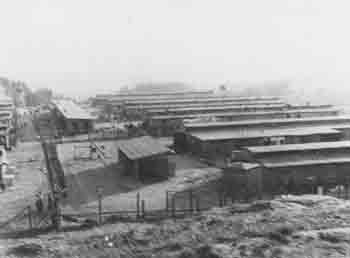 Barracks at concentration camp Gusen
Barracks at concentration camp Gusen -
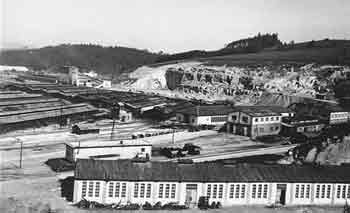 The Gusen concentration camp after liberation.
The Gusen concentration camp after liberation. -
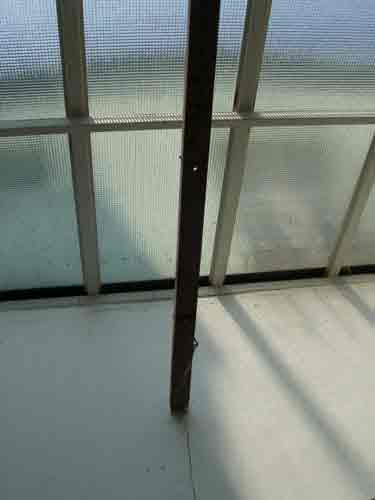 Beam from which prisoners were hung at Mauthausen
Beam from which prisoners were hung at Mauthausen -
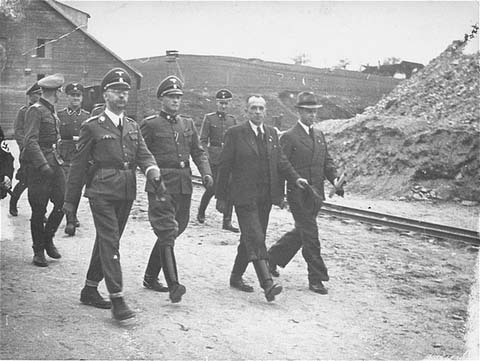 Himmler speaks to a member of his entourage while viewing the quarry during an inspection tour of the Mauthausen concentration camp. (April 27, 1941)
Himmler speaks to a member of his entourage while viewing the quarry during an inspection tour of the Mauthausen concentration camp. (April 27, 1941) -
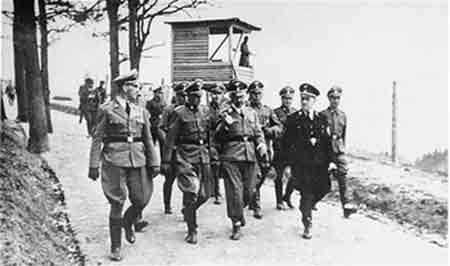 Pictured in the front row from left to right are Ernst Kaltenbrunner, Frank Ziereis, Heinrich Himmler, Karl Chmielewski, and August Eigruber. At the far right in the second row is George Bachmayer. (April 1941)
Pictured in the front row from left to right are Ernst Kaltenbrunner, Frank Ziereis, Heinrich Himmler, Karl Chmielewski, and August Eigruber. At the far right in the second row is George Bachmayer. (April 1941) -
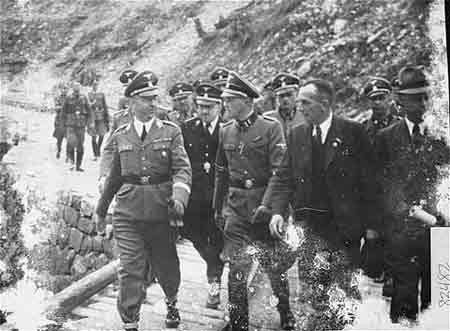 Himmler and his entourage inspect the Wiener Graben quarry (April 27, 1941)
Himmler and his entourage inspect the Wiener Graben quarry (April 27, 1941) -
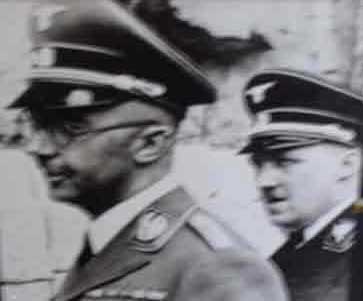 Reichsfuehrer SS Heinrich Himmler beginning his inspection of Mauthausen
Reichsfuehrer SS Heinrich Himmler beginning his inspection of Mauthausen -
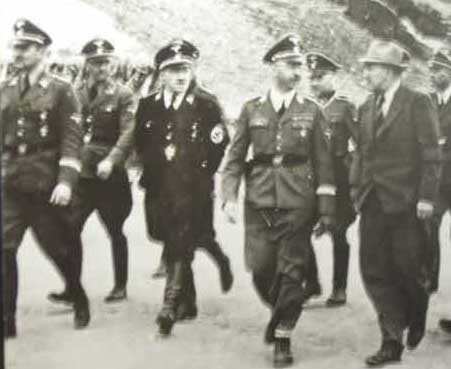 Reichsfuehrer SS Heinrich Himmler beginning his inspection of Mauthausen
Reichsfuehrer SS Heinrich Himmler beginning his inspection of Mauthausen -
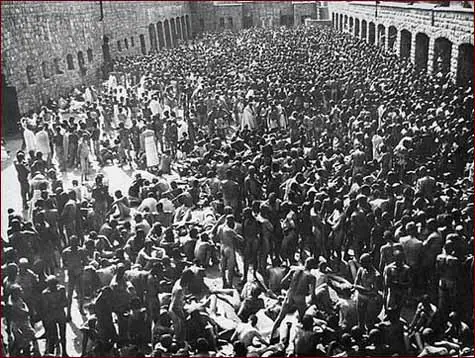 Six thousand inmates await disinfection in a Mauthausen courtyard, July 1941. After 24 hours of waiting, nearly 140 had died.
Six thousand inmates await disinfection in a Mauthausen courtyard, July 1941. After 24 hours of waiting, nearly 140 had died. -
 Lt. Jack Taylor of the OSS was captured during the Dupont mission and taken to Mauthausen. Shown here after liberation, he later testified in the war crimes trial against the Nazis who ran the camp.
Lt. Jack Taylor of the OSS was captured during the Dupont mission and taken to Mauthausen. Shown here after liberation, he later testified in the war crimes trial against the Nazis who ran the camp. -
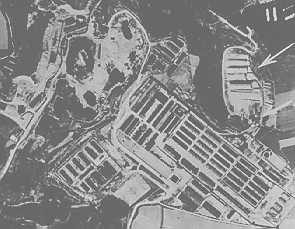 KL Mauthausen central camp is located some 3 km east of the KL Gusen I & II camps. Today it is a museum to commemorate the 120.000 victims that died in a system of 49 different camps. The biggest group of victims (some 40.000 out of them) died at the bigger Gusen camps some kilometers away. In the final phase of the war, the stone-quarries and most of the surrounding buildings of the camp were used for the production of KL Gusen II aircraft-parts too.
KL Mauthausen central camp is located some 3 km east of the KL Gusen I & II camps. Today it is a museum to commemorate the 120.000 victims that died in a system of 49 different camps. The biggest group of victims (some 40.000 out of them) died at the bigger Gusen camps some kilometers away. In the final phase of the war, the stone-quarries and most of the surrounding buildings of the camp were used for the production of KL Gusen II aircraft-parts too. -
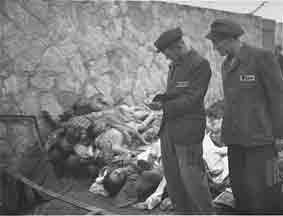 Liberators Find Mauthausen Dead
Liberators Find Mauthausen Dead -
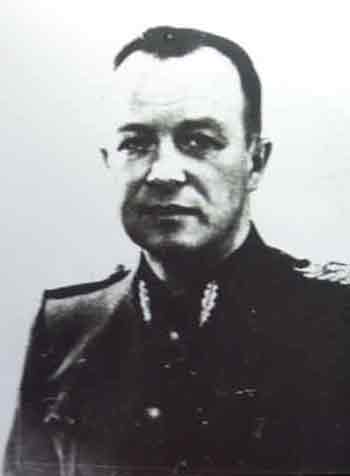 Mauthausen Commandant Franz Ziereis
Mauthausen Commandant Franz Ziereis -
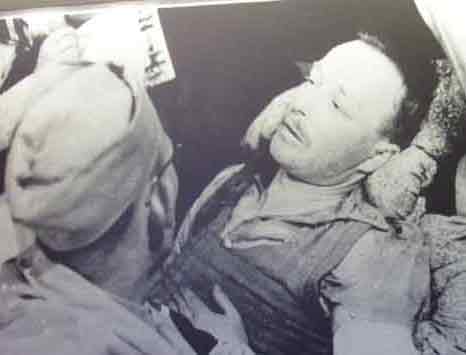 Mauthausen Commandant Franz Ziereis after being shot and captured by U.S. forces.
Mauthausen Commandant Franz Ziereis after being shot and captured by U.S. forces. -
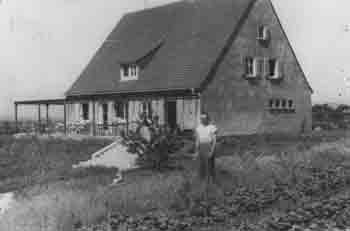 House of SS General Franz Ziereis
House of SS General Franz Ziereis -
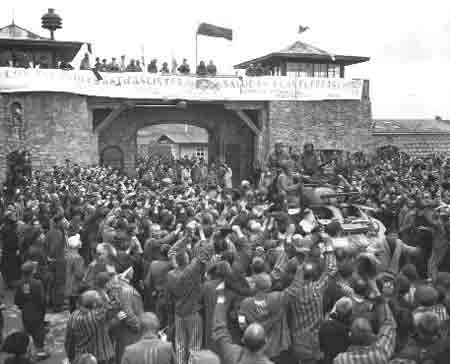 Prisoners welcome liberators at Mauthausen
Prisoners welcome liberators at Mauthausen -
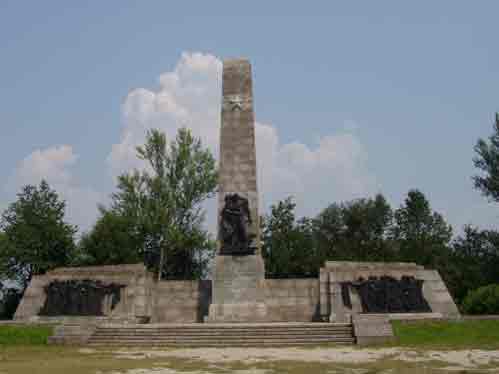 Mauthausen Memorial
Mauthausen Memorial -
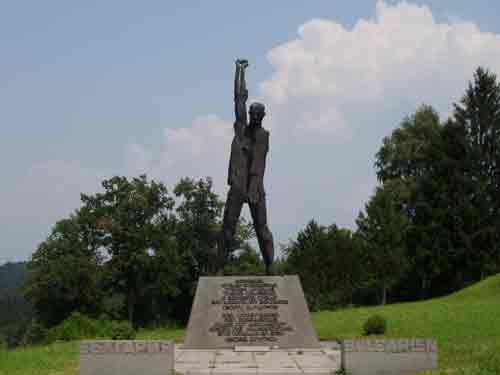 Mauthausen Memorial
Mauthausen Memorial -
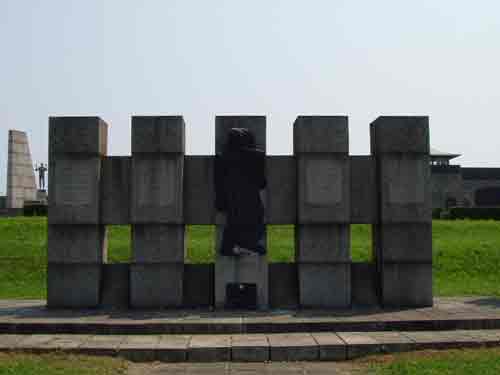 Mauthausen Memorial
Mauthausen Memorial -
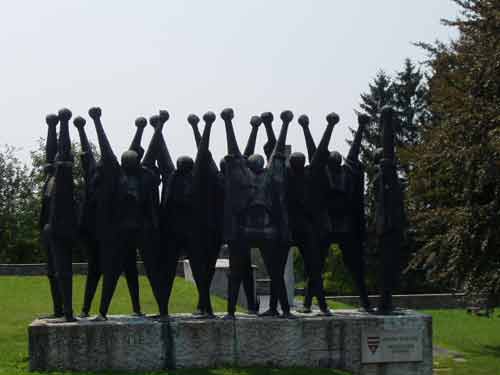 Mauthausen Memorial
Mauthausen Memorial -
 Mauthausen Memorial
Mauthausen Memorial -
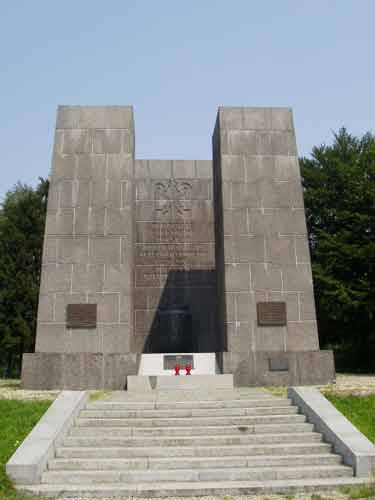 Mauthausen Memorial
Mauthausen Memorial -
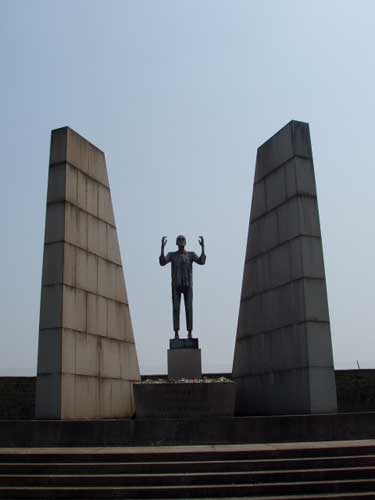 Mauthausen Memorial
Mauthausen Memorial -
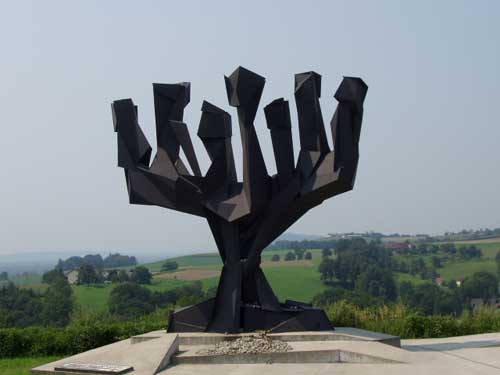 Mauthausen Memorial
Mauthausen Memorial -
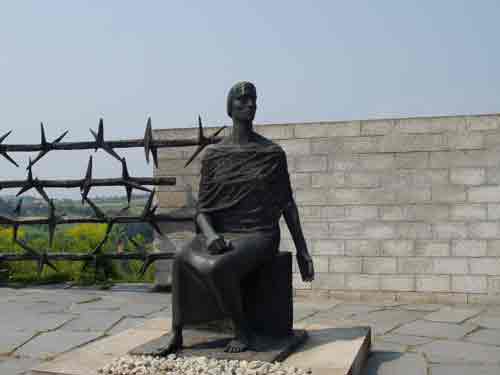 Mauthausen Memorial
Mauthausen Memorial -
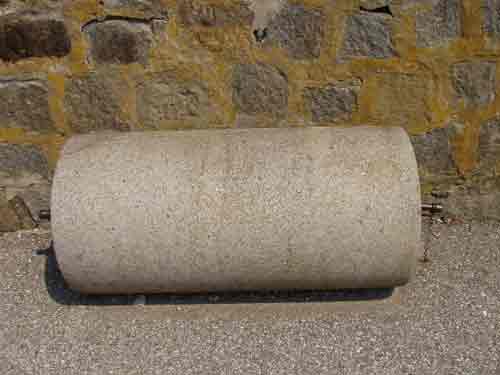 Roller prisoners were forced to use to flatten roll call area at Mauthausen
Roller prisoners were forced to use to flatten roll call area at Mauthausen -
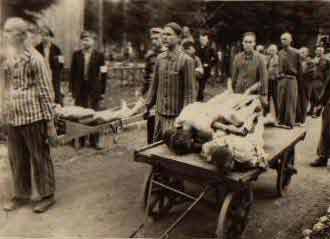 At Mauthausen, 2000 prisoners a week died from starvation.
At Mauthausen, 2000 prisoners a week died from starvation. -
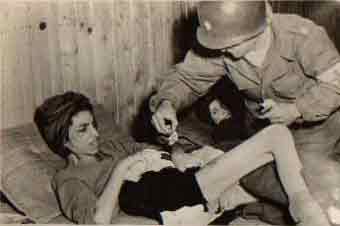 Starved Hungarian woman receives treatment after liberation of Mauthausen.
Starved Hungarian woman receives treatment after liberation of Mauthausen. -
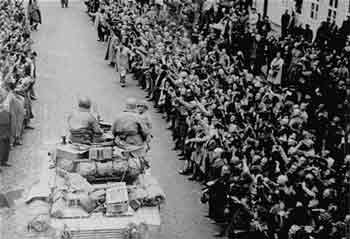 Cheering survivors greet American troops as they enter the Mauthausen concentration camp a day after the actual liberation. According to P. Serge Choumoff, an historian and survivor of Mauthausen, this event was a recreation of the liberation done at the request of General Eisenhower.
Cheering survivors greet American troops as they enter the Mauthausen concentration camp a day after the actual liberation. According to P. Serge Choumoff, an historian and survivor of Mauthausen, this event was a recreation of the liberation done at the request of General Eisenhower. -
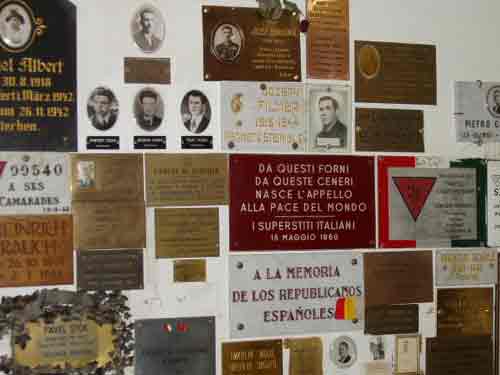 Memorial wall at Mauthausen
Memorial wall at Mauthausen -
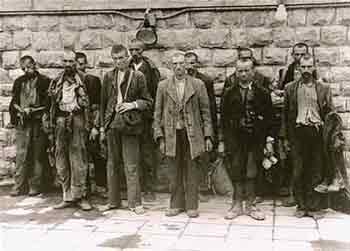 Newly arrived prisoners were forced to stand at attention for hours facing this wall while chained to iron rings.
Newly arrived prisoners were forced to stand at attention for hours facing this wall while chained to iron rings. -
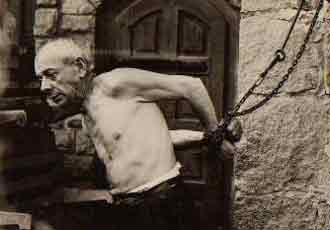 At Mauthausen, inmates were chained for three days without food or water.
At Mauthausen, inmates were chained for three days without food or water. -
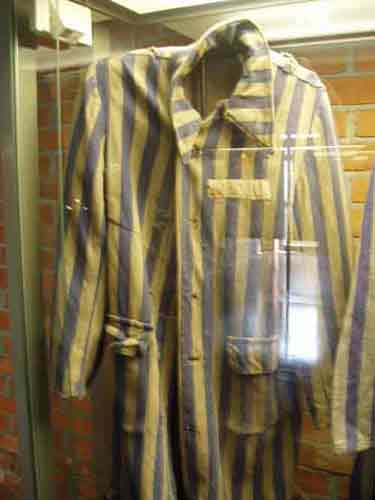 Prisoner uniform used at Mauthausen
Prisoner uniform used at Mauthausen -
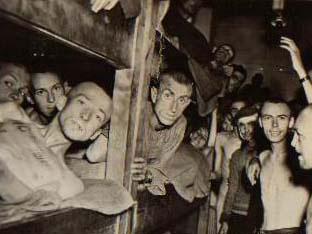 Prisoners at Mauthausen
Prisoners at Mauthausen -
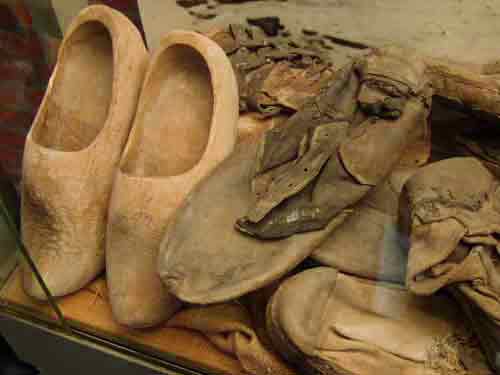 Shoes of prisoners at Mauthausen
Shoes of prisoners at Mauthausen -
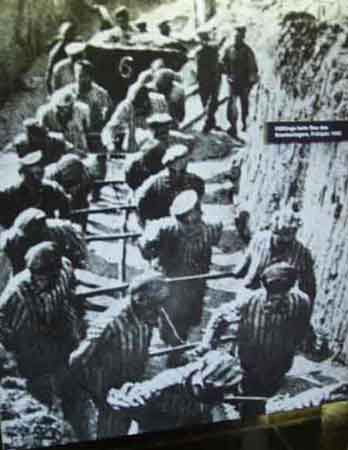 Pulling railcars of stones at Mauthausen
Pulling railcars of stones at Mauthausen -
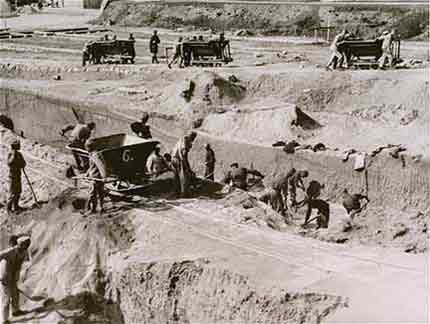 Spanish Republicans at forced labor in the quarry at Mauthausen (1942)
Spanish Republicans at forced labor in the quarry at Mauthausen (1942) -
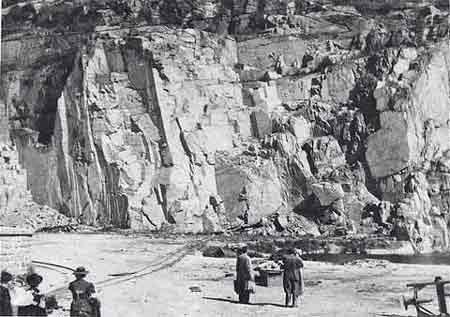 Photo taken just after liberation of Mauthausen on May 8, 1945, by American Gen. George Patton's troops.
Photo taken just after liberation of Mauthausen on May 8, 1945, by American Gen. George Patton's troops. -
IMAGE_CAPTION_HERE
-
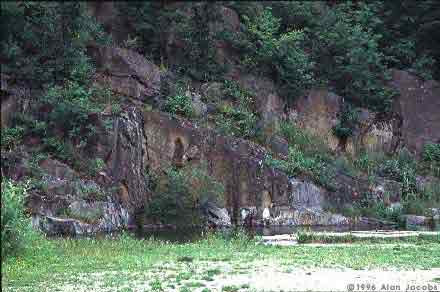 Today the quarry where so many died terrible deaths is quiet and still but for the occasional gentle breeze off the granite walls, or the hushed voices of tourists, or a parent summoning a child, or even a survivor describing what it was like here... then.
Today the quarry where so many died terrible deaths is quiet and still but for the occasional gentle breeze off the granite walls, or the hushed voices of tourists, or a parent summoning a child, or even a survivor describing what it was like here... then. -
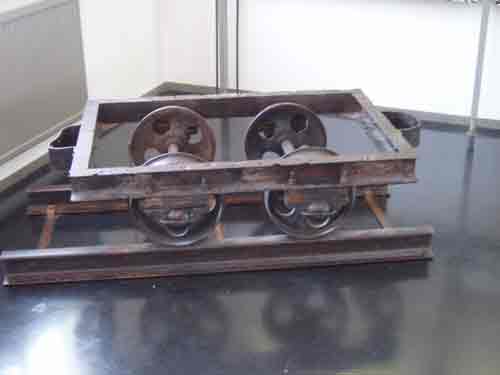 Part of railway car used for hauling rocks at Mauthausen
Part of railway car used for hauling rocks at Mauthausen -
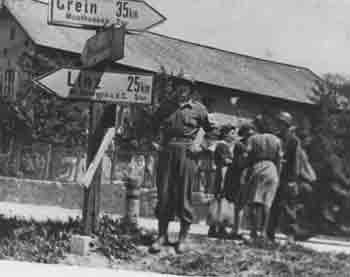 �On the way to the concentration camp Mauthausen and Gusen�
�On the way to the concentration camp Mauthausen and Gusen� -
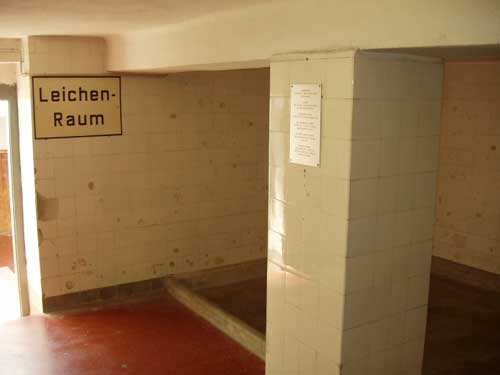 Room where corpses were taken at Mauthausen
Room where corpses were taken at Mauthausen -
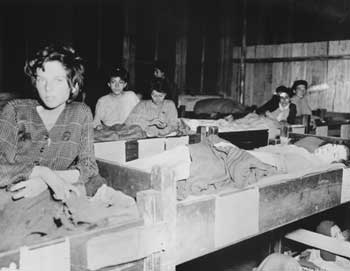 Female survivors of the Mauthausen concentration camp lie in wooden bunks in the hospital barracks.
Female survivors of the Mauthausen concentration camp lie in wooden bunks in the hospital barracks. -
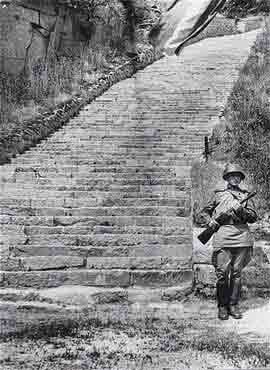 Prisoners were forced to climb the 186 steps of the Wiener Graben with large blocks of granite on their backs. Often the blocks would fall, crushing limbs and bodies of those following, sometimes killing. The SS guards invented competitions betting on which prisoner would make it to the top first. Those surviving the ordeal would then be forced to jump from the edge of the quarry to their death below. This particular spot at the edge of the quarry was known �The Parachute Jump.�
Prisoners were forced to climb the 186 steps of the Wiener Graben with large blocks of granite on their backs. Often the blocks would fall, crushing limbs and bodies of those following, sometimes killing. The SS guards invented competitions betting on which prisoner would make it to the top first. Those surviving the ordeal would then be forced to jump from the edge of the quarry to their death below. This particular spot at the edge of the quarry was known �The Parachute Jump.� -
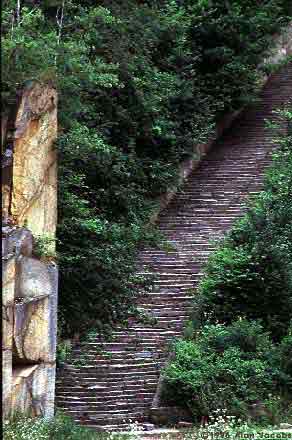 Prisoners were forced to climb the 186 steps of the Wiener Graben with large blocks of granite on their backs. Often the blocks would fall, crushing limbs and bodies of those following, sometimes killing. The SS guards invented competitions betting on which prisoner would make it to the top first. Those surviving the ordeal would then be forced to jump from the edge of the quarry to their death below. This particular spot at the edge of the quarry was known �The Parachute Jump.�
Prisoners were forced to climb the 186 steps of the Wiener Graben with large blocks of granite on their backs. Often the blocks would fall, crushing limbs and bodies of those following, sometimes killing. The SS guards invented competitions betting on which prisoner would make it to the top first. Those surviving the ordeal would then be forced to jump from the edge of the quarry to their death below. This particular spot at the edge of the quarry was known �The Parachute Jump.� -
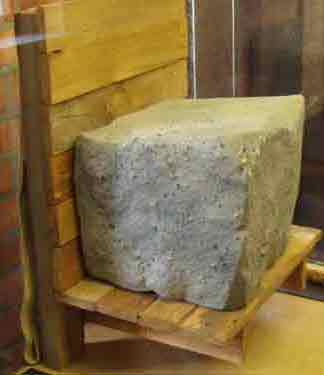 Prisoners were forced to wear these carriers on their backs to haul stones from the quarry at Mauthausen
Prisoners were forced to wear these carriers on their backs to haul stones from the quarry at Mauthausen -
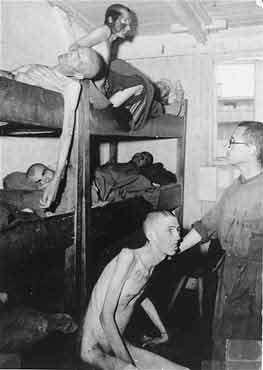 Tattooed survivors in a barracks in Mauthausen
Tattooed survivors in a barracks in Mauthausen -
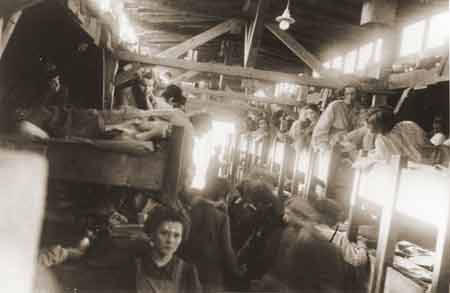 Survivors in the women's barracks at the newly liberated lower camp of Mauthausen.
Survivors in the women's barracks at the newly liberated lower camp of Mauthausen. -
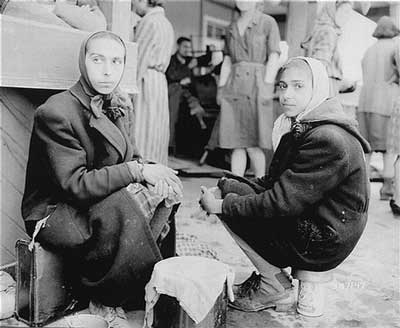 Two sisters from Italy who were political prisoners at Gusen. They avoided execution by hiding from doctors who chose prisoners for the gas chambers.
Two sisters from Italy who were political prisoners at Gusen. They avoided execution by hiding from doctors who chose prisoners for the gas chambers. -
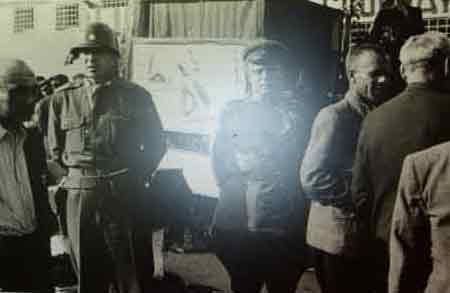 U.S. Colonel Col. Richard R. Seibel was appointed to take command of the Mauthausen camp for 35 days, after an American patrol found the camp in April 1945, before the official liberation of the camp on May 5, 1945.
U.S. Colonel Col. Richard R. Seibel was appointed to take command of the Mauthausen camp for 35 days, after an American patrol found the camp in April 1945, before the official liberation of the camp on May 5, 1945. -
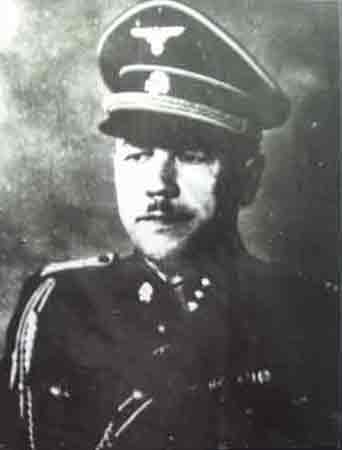 SS Hauptsturmfuhrer Adolf Zutter of Mauthausen
SS Hauptsturmfuhrer Adolf Zutter of Mauthausen -
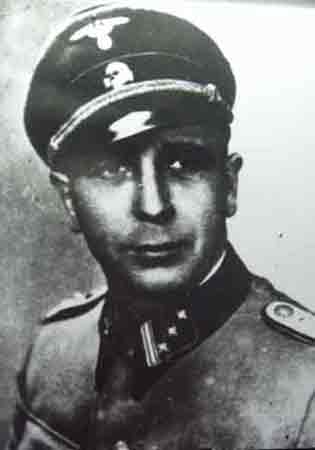 SS Hauptsturmfuhrer Georg Bachmayer of Mauthausen
SS Hauptsturmfuhrer Georg Bachmayer of Mauthausen -
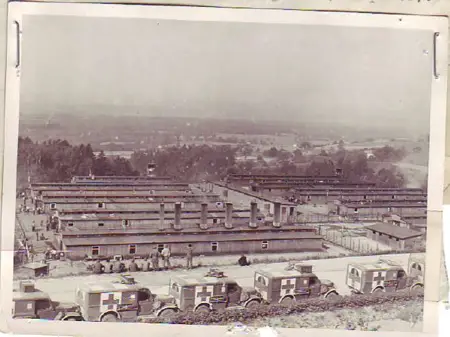 Russian Lager
Russian Lager -
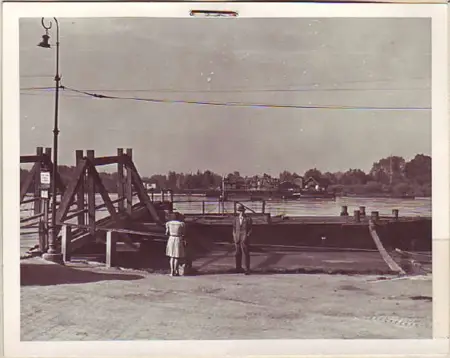 Danube Ferry at Mauthausen
Danube Ferry at Mauthausen -
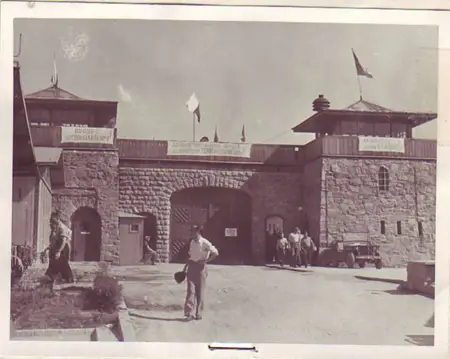 Mauthausen Main Gate
Mauthausen Main Gate -
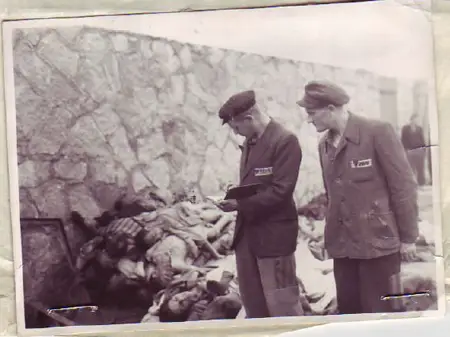 Prisoners Wearing Civilian Clothing with Prison-Cloth Patch
Prisoners Wearing Civilian Clothing with Prison-Cloth Patch -
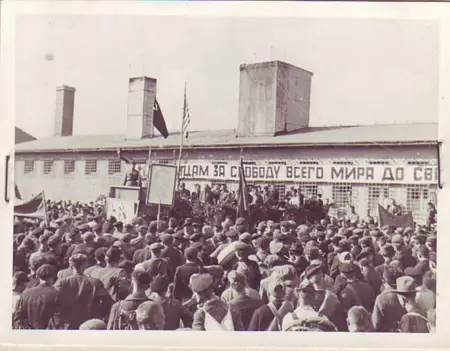 Exterior Mauthausen Death House
Exterior Mauthausen Death House -
-
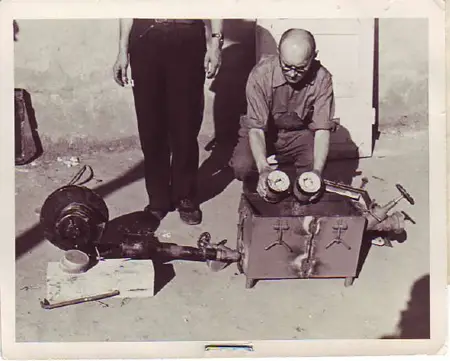 Gas Chamber Apparatus
Gas Chamber Apparatus -
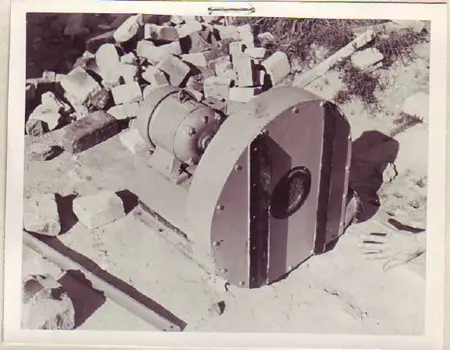 Exhaust Devise for Gas Chamber
Exhaust Devise for Gas Chamber -
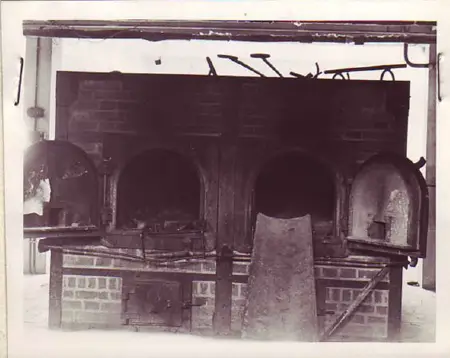 Crematoria
Crematoria -
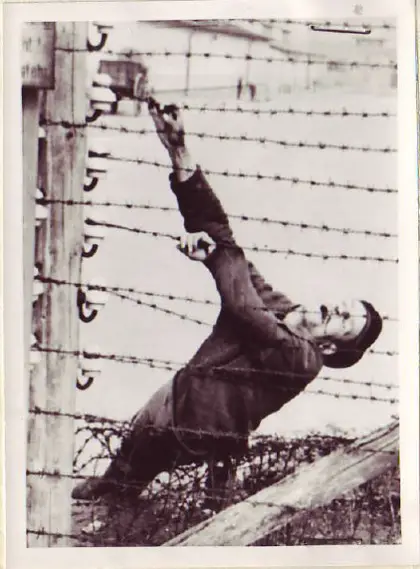 Prisoner Killed on Electric Fence
Prisoner Killed on Electric Fence -
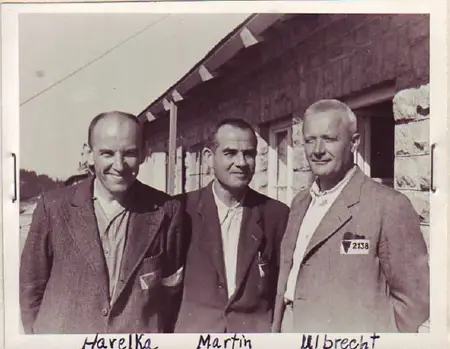 Survivors Georg Havelka, Ernst Martin, Joseph Ulbrecht
Survivors Georg Havelka, Ernst Martin, Joseph Ulbrecht -
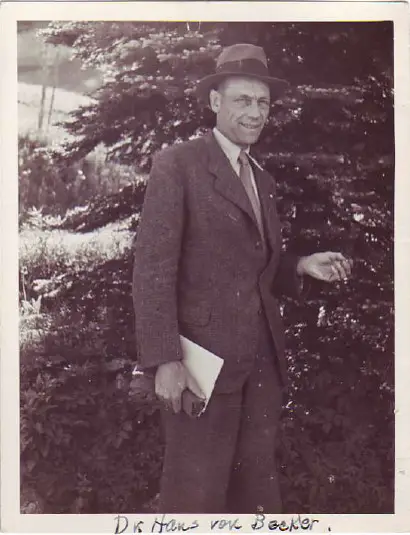 Dr. Hans von Becker. This photograph is in not part of the Dupont Mission Report but is misfiled with the SS photos. However, von Becker, formerly Schussnig�s publicity minister, was a prisoner
Dr. Hans von Becker. This photograph is in not part of the Dupont Mission Report but is misfiled with the SS photos. However, von Becker, formerly Schussnig�s publicity minister, was a prisoner
Sources: USHMM, U.S. Army photos from the Center for Holocaust and Genocide Studies: Educational Resources, NARA, Oscar Roth Papers, Manuscripts and Archives, Yale University Library, p.Mauthausen Concentration Camp, UDT-SEAL Association's, "BLAST" magazine, Forgotten Camps
